3D Truss Models
-
@jql said:
Hi again medeek,
The only problem I see with it is that it's idea is very interesting but I think fire regulations don't allow for it to be visible.According to recent research Open Joist trusses seem to perform better in fires than both I-Joists and MPC wood floor trusses. However, there is plenty of debate on the matter.
-
I'm recently dealing with a lot of heritage buildings where wood is used (I haven't found any truss similar to the ones in your impressive set yet though) and what our consultants do, so we can build with visible wood on new structures, is to over dimension them. However with such thin profiles I bet this can't be achieved.
Do you have any take on that?
-
@medeek said:
@jql said:
Hi again medeek,
The only problem I see with it is that it's idea is very interesting but I think fire regulations don't allow for it to be visible.According to recent research Open Joist trusses seem to perform better in fires than both I-Joists and MPC wood floor trusses. However, there is plenty of debate on the matter.
How is this different from the floor trusses you are now doing --or are you talking about this specific manufacturer? They seem to use OSB on part of the trusses for some reason...(Oh, I guess so you can cut to fit in the field?).
To clarify. Isn't "open" joist just referring to the product name (and the fact that the truss system is open as opposed to a solid joist. I don't think this necessarily means it's exposed. I doubt many would leave these trusses exposed, but the fire requirement depends on the type of building and/or the floor's rating.
-
Sorry for all of the confusing terminology.
Open Joist refers to a specific product produced by Barrette in Quebec Canada.
There two main products are:
Open Joist 2000
Open Joist TriForceThe thing that makes these floor trusses different from your standard MPC wood floor truss is that they use finger jointed webs instead of metal plates. The floor trusses are made entirely of wood and glue with no metal connectors.
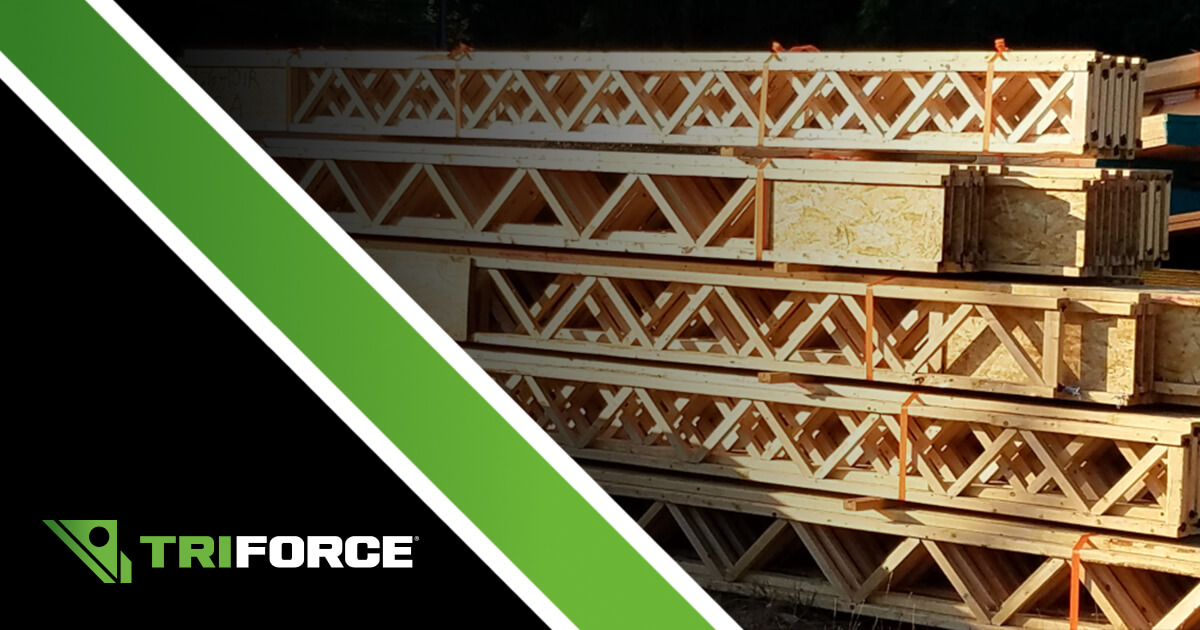
TRIFORCE® Open Joist: Peace of Mind Underfoot
The TRIFORCE® open joist is a state-of-the-art product in the forefront of the construction industry.

TRIFORCE® Open Joist (www.openjoisttriforce.com)
They come in standard sizes and lengths with a field trimmable end. They are installed similar to I-Joists using a rim board at the perimeter of the floor.
-
Pbacot,
I meant I like them exposed not that they should be exposed.
-
Building code in the US usually requires some form of 1 hour rated covering (ie. 1/2" gypsum).
-
In here it's the same, however, if we can prove that the wooden structure will hold one hour more than needed, because of extra thickness, we don't need the covering. This can't be done with steel as heat makes it loose physical properties much faster than what happens with wood.
-
For large agricultural buildings a double inverted truss can be employed to provide a large vaulted span for machinery:

I am wondering if this truss type is still commonly used by anyone for this type of application and whether it would be of interest, enough for me to add it into the growing list of trusses within the plugin.
Also if anyone has any shop drawings they could send me that would be very helpful.
-
A quick study of a double inverted truss by taking two 24' howe trusses and joining them to form a double truss. Note that the 4:12 pitch of the original trusses is maintained and the interior vault is exactly 8:12 pitch.
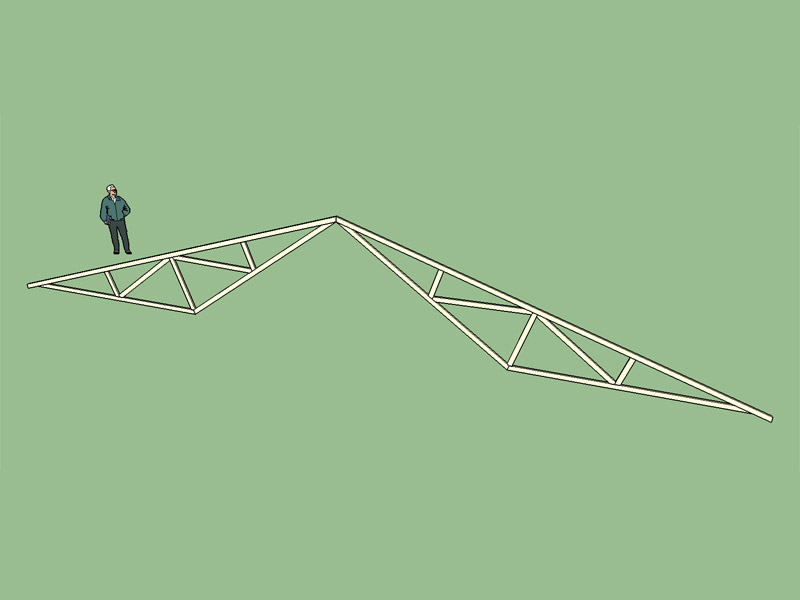
View model here:
3D Warehouse
3D Warehouse is a website of searchable, pre-made 3D models that works seamlessly with SketchUp.
(3dwarehouse.sketchup.com)
My question with this configuration is how the top and bottom chords at the peak should butt up? For example should the bottom chords at the peak have a double scarf cut or a single scarf cut? Some shop drawings would help in determining what is common practice.
-
Version 1.5.7 - 05.15.2016
- Added Scissor truss type, configurations: (4/2, 6/4).
- Structural outlookers (vert. & horz.) enabled under advanced roof options for Scissor (4/2, 6/4) truss types.
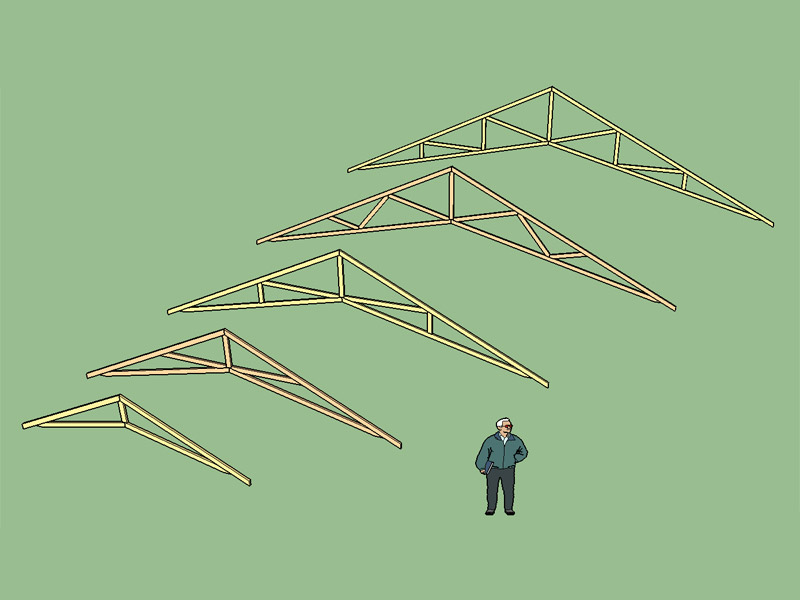
View model here:
3D Warehouse
3D Warehouse is a website of searchable, pre-made 3D models that works seamlessly with SketchUp.
(3dwarehouse.sketchup.com)
I also updated the pause in the truss selector GUI from 700 ms to 400 ms. Still more work to be done with raised heels and structural outlookers for some of these configurations but its getting close.
-
Coffer Truss Algorithm:
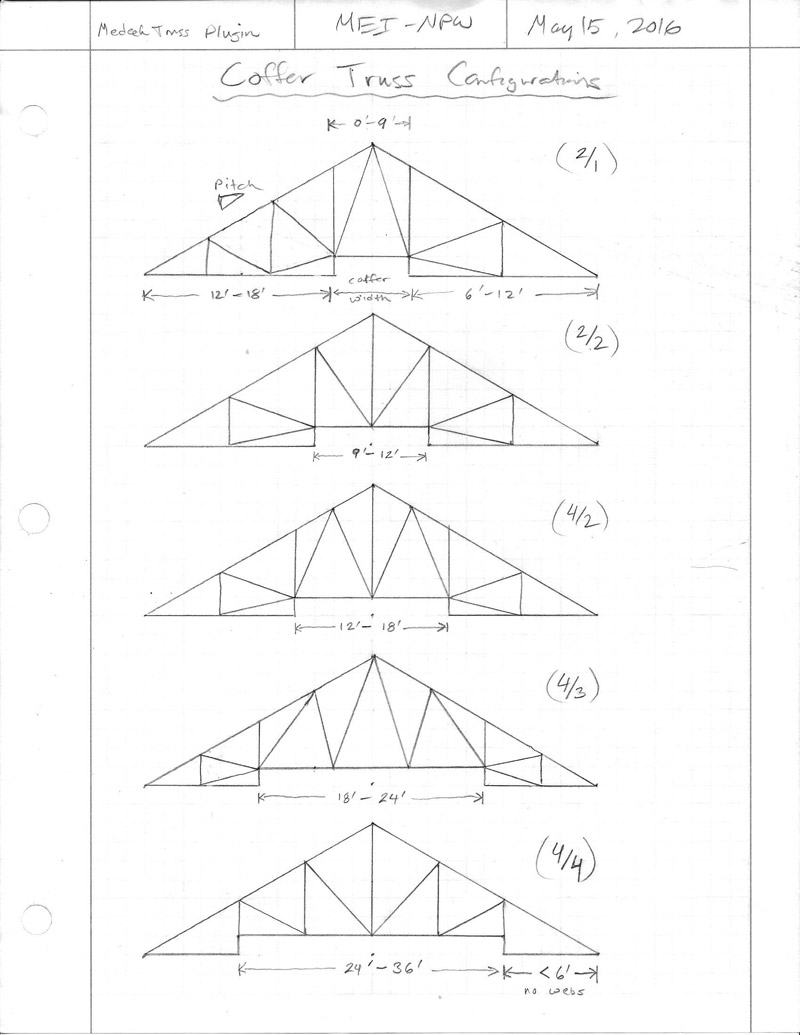
This is assuming that the coffer span is centered on the truss. A non-centered coffer algorithm could get significantly more interesting and difficult.
-
In Oct. 7 last year I asked what is a bona fide extension in response to Juju's questions. That has led to about 57 releases and quite a large effort to put together a fairly decent plugin that can actually do what it purports to do which is create some accurate trusses and/or roof geometry.
I'm currently at 145 registered users with about ten times that in actual installations of the trial plugin. The number of registered users seems to have plateaued for now with maybe one or two new registrations per week.
I don't know if this is because the plugin exposure is fairly saturated or it simply is not quite good enough to entice an SU user to want to purchase the full version. The plugin is still missing a lot of features and there are quite a few more truss types and roof framing types that need to get added so my hope is that that is the reason for the plateau in the last few weeks.
If you have downloaded the trial version and have decided that more is needed before you are ready to upgrade to the full version please send me an email or message me with details, comments or suggestions on how I can get there. At least 40% of the current plugin is the result of requests from users so feedback has heavily factored into the development and will continue to do so.
I apologize that the manual is still not complete. Over the next month I am going to try and update the existing docs and start adding more content to bring it up to speed.
-
This map shows where the Truss Plugin is being utilized:
Note, this is only registered users and not all installations of the trial version. Also note that addresses have been dumbed down to City, State, Country so that the privacy of registered users is upheld.
-
@medeek said:
This map shows where the Truss Plugin is being utilized:
Note, this is only registered users and not all installations of the trial version. Also note that addresses have been dumbed down to City, State, Country so that the privacy of registered users is upheld.
interesting to see!
-
Version 1.5.8 - 05.22.2016
- Added metric input for Gambrel Attic truss type.
- Added a graphical user interface (GUI) for metric gambrel attic geometry input.
-
Gambrel Attic (metric) GUI
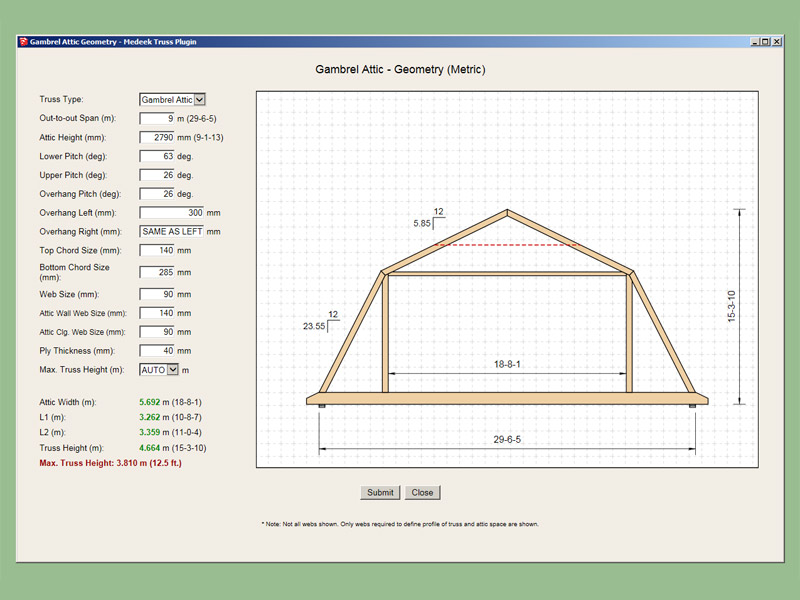
I also show the industry standard feet-inches-sixteenths.
-
Version 1.5.9 - 05.29.2016
- Increased top chord pitch limit from 12/12 to 18/12 for the following Scissor truss types, configurations: (2/2, 4/4).
- Heel web logic revised to accommodate steeper pitches for bottom and top chords of scissor trusses.
- Increased top chord pitch limit from 12/12 to 18/12 for valley truss sets.
16/12:12/12 Scissor Truss with an 18" raised heel:
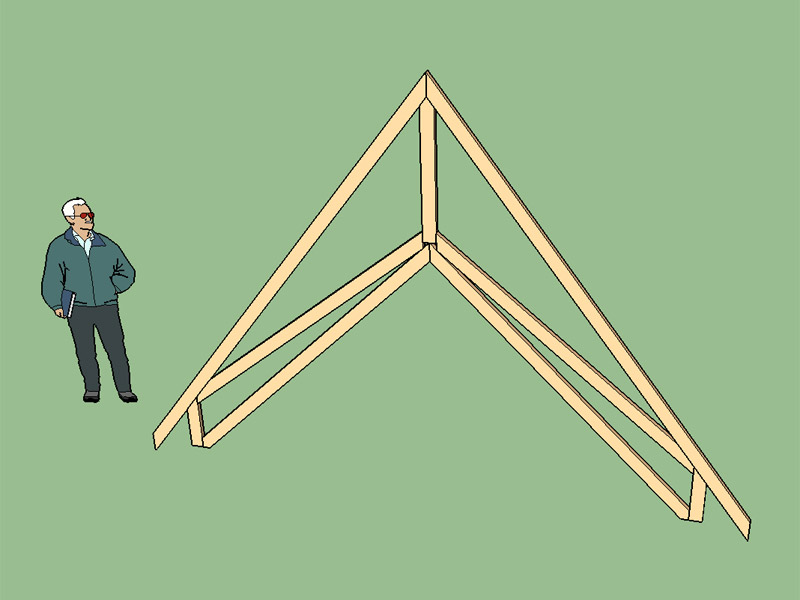
Notice that the steep pitch of the bottom chord changes the way the heel web and bottom chord meet at the bearing point. The additional logic listed in the changelog notes deals specifically with this issue.
View model here:
3D Warehouse
3D Warehouse is a website of searchable, pre-made 3D models that works seamlessly with SketchUp.
(3dwarehouse.sketchup.com)
-
I will probably add the symmetric cathedral truss type next:
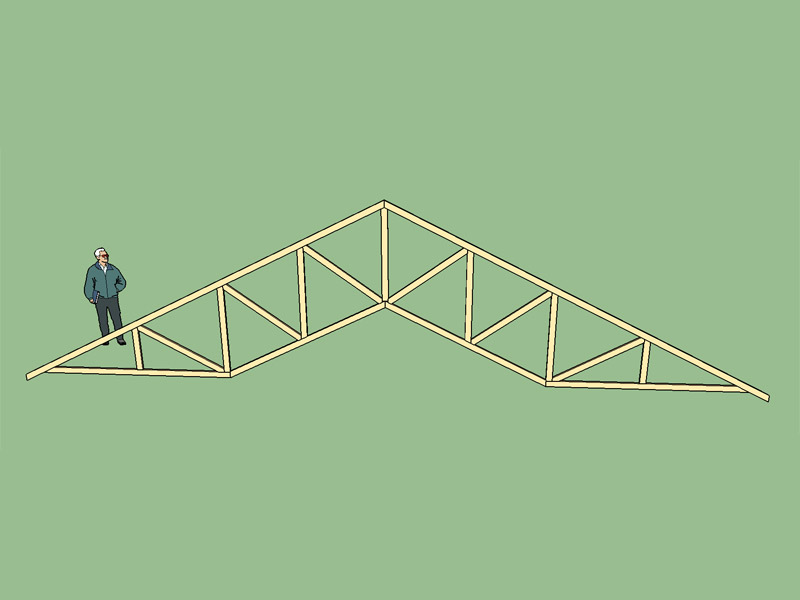
View model here:
3D Warehouse
3D Warehouse is a website of searchable, pre-made 3D models that works seamlessly with SketchUp.
(3dwarehouse.sketchup.com)
The web configurations will use an "auto" triangulation algorithm similar to the tray truss type.
-
This has really got into an impressive level! Congratulations!
-
@jql said:
This has really got into an impressive level! Congratulations!
indeed, help spread the word to help the man get more sales!
Advertisement








